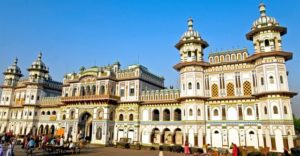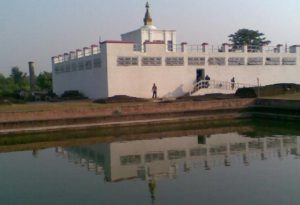By Ballav Dahal —
With the success of many expeditions to Mt. Everest and nominal human casualties on the world’s tallest mountain this spring, Nepal has been highlighted internationally.
During the period, more than 400 climbers from across the world reached the summit of the 8,848-metre peak. Four women journalists from Nepal were also among them.
“A good message about Nepal has been sent globally due to smooth operations of expeditions to Mt. Everest,” said Jiban Ghimire, Managing Director of Shangri-La Nepal Trek.
The adventure tour operating company operated one expedition each to Mt. Everest and Mt. Lhotse this spring. “Both the expeditions were successful. I think that I do not need to do much marketing for the next year,” said Ghimire.
Three Nepali Sherpas and four foreigners died on Everest from Nepal side. “The number of casualties, especially Nepali mountain guides and other field staff, has dropped significantly after the operation of the Khumbu Climbing School in the Khumbu Region,” he said.
The school conducts practical trainings for all the mountaineering field staff for their safety and safe guiding.
There were no Everest expeditions in 2014 and 2015. Expeditions were abandoned after an avalanche killed 16 climbing Sherpas in the Khumbu Icefall in 2014. Many lost their lives in an avalanche at Everest Base Camp due to the devastating earthquake in 2015.
Ishwari Paudel, Managing Director of Himalayan Guide Nepal, said that all the expeditions to Mt. Everest, Mt. Lhotse and Mt. Nuptse were greatly successful.
“This is certainly good news for Nepal. We are hopeful that more mountaineers will be coming to Nepal in 2019,” said Paudel.
Paudel’s company had been entrusted with the responsibility of fixing ropes from Camp II to the summit of Mt. Everest for this year’s spring expeditions.
“As we completed the task on time, it was easier for the expeditions to make their attempts successful,” he said.
Several new world records on mountaineering were also set this spring. The mountaineering activities were given good coverage by international media.
Kami Rita Sherpa of Nepal was among those creating history on Mt. Everest this spring. The 48-year-old Sherpa from Solukhumbu district made it to the world’s tallest mountain 22 times.
Similarly, 45-year-old Lhakpa Sherpa from Sankhuwasabha has set a new record by becoming the first woman in the world to scale Mt. Everest nine times. For the first time, she had reached the summit of Everest in 2000.
Likewise, another Nepali woman Nima Jangbu Sherpa scaled Mt. Kanchenjunga (8586m). She is the first Nepali woman to successfully attempt the world’s third tallest mountain. She is also the first Nepali woman to make it to three mountains above 8,000 metres in a single season. She climbed Mt. Lhotse, Mt. Everest and Mt. Kanchenjunga on April 29, May 14 and May 23, respectively.
Meanwhile, British climber Kenton Cool, 45, climbed Everest 13 times. He is the first Briton to set a new record on the mountain.
Chinese climber Xia Boyu, 70, reached atop the world’s tallest mountain. He is the first double amputee from China to reach the summit.
Similarly, Maria P. Valenzuela, 55, who is also a breast cancer survivor from Chile, conquered Everest. She was a member of the SNT Everest Expedition-Spring 2018.
Another Chilean alpinist Hernan Leal climbed Mt. Everest and Mt. Lhotse in a single season this year.
Australian climber Steve Plain was another record setter on Everest. Steve became the fastest person to climb the highest mountain on each of the world’s seven continents. He set his feet atop Everest this spring 117 days after conquering Mt. Vinson, the tallest peak of Antarctica.
Adventure activities, especially trekking and mountaineering, directly support the rural economy as the adventurers spend much longer period there. Many mountain guides, porters, cooks and others get employment opportunities every mountaineering season. Spring is the main season for climbing.
The royalty raised from expeditions to Mt. Everest is a vital source of income for the government. A whooping sum of Rs. 361 million has gone to the state coffer this spring as royalty charged from those attempting Mt. Everest alone.
As Nepal is home to eight of 14 mountains above 8,000 meters and hundreds of other mountains and trekking peaks, the country is an important destination among mountaineers and other nature lovers from across the world.
June 12 , 2018
Image courtesy: Ang T. Sherpa



